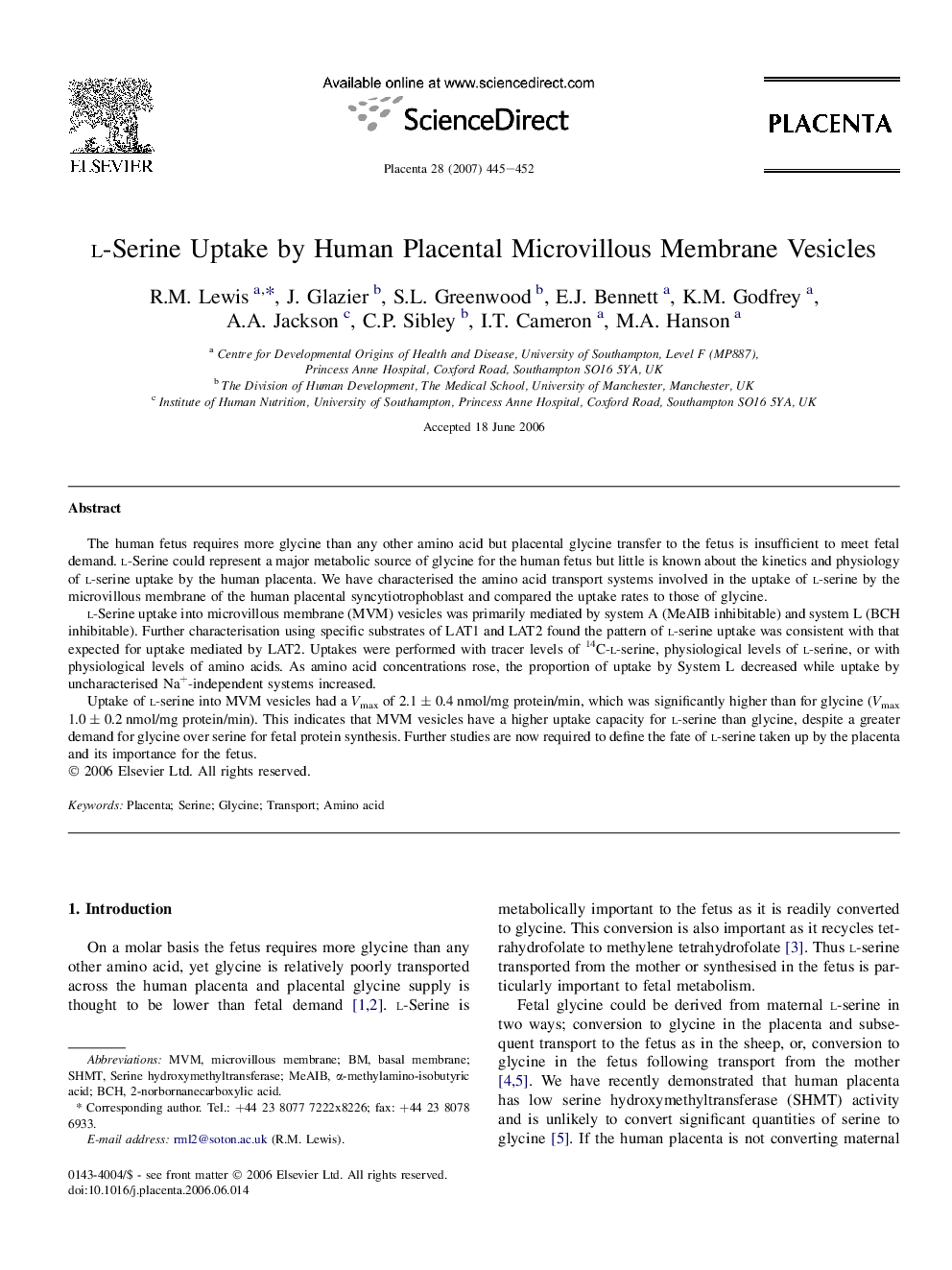| Article ID | Journal | Published Year | Pages | File Type |
|---|---|---|---|---|
| 2790012 | Placenta | 2007 | 8 Pages |
The human fetus requires more glycine than any other amino acid but placental glycine transfer to the fetus is insufficient to meet fetal demand. l-Serine could represent a major metabolic source of glycine for the human fetus but little is known about the kinetics and physiology of l-serine uptake by the human placenta. We have characterised the amino acid transport systems involved in the uptake of l-serine by the microvillous membrane of the human placental syncytiotrophoblast and compared the uptake rates to those of glycine.l-Serine uptake into microvillous membrane (MVM) vesicles was primarily mediated by system A (MeAIB inhibitable) and system L (BCH inhibitable). Further characterisation using specific substrates of LAT1 and LAT2 found the pattern of l-serine uptake was consistent with that expected for uptake mediated by LAT2. Uptakes were performed with tracer levels of 14C-l-serine, physiological levels of l-serine, or with physiological levels of amino acids. As amino acid concentrations rose, the proportion of uptake by System L decreased while uptake by uncharacterised Na+-independent systems increased.Uptake of l-serine into MVM vesicles had a Vmax of 2.1 ± 0.4 nmol/mg protein/min, which was significantly higher than for glycine (Vmax 1.0 ± 0.2 nmol/mg protein/min). This indicates that MVM vesicles have a higher uptake capacity for l-serine than glycine, despite a greater demand for glycine over serine for fetal protein synthesis. Further studies are now required to define the fate of l-serine taken up by the placenta and its importance for the fetus.
